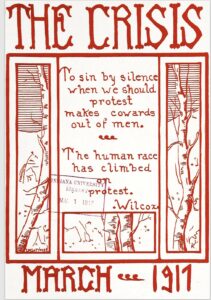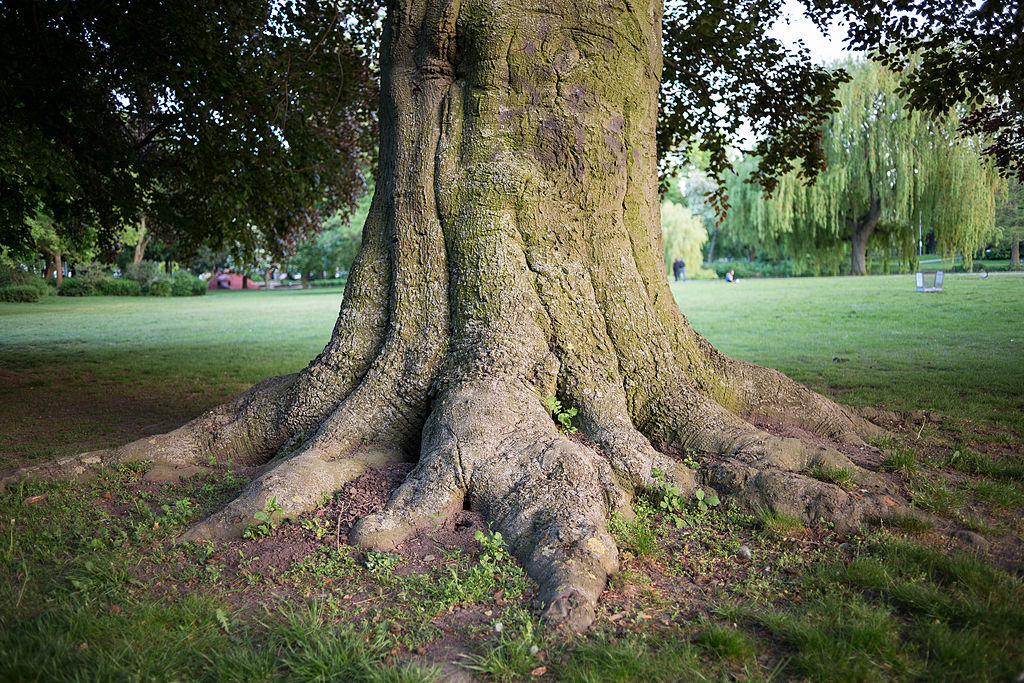



The covers of The Crisis characterize the misconstrued thoughts, feelings, and way of life that black people experience in America. These covers are for the hopeful, defiant, and blueprints for the soon-to-be black nationalists. These covers suggest that the New Negro are viable beings. That the New Negro is a survivor. New Negros continue to evolve through their confounding experience in America. The New Negro did not die. Despite micro-aggressions and the patent target for several acts of violence, the New Negro multiplies. Beautiful black babies are portrayed with their mothers (Crisis Volume 11, Fig 1). Or these babies are portrayed on their own (Crisis Volume.5, No. 6& Crisis Volume 10, No.6). These black babies vitalize hope for the New Negro to become a black nationalist. These babies symbolize the continuation of the New Negros. They stand out to remind the New Negro that there is hope to meet others like themselves in America. The New Negro no longer suffers an identity crisis or questions their representation in areas outside the home.
The New Negro are innovators and architects. Like Maya Angelou says, The New Negro starts to rise (“Still I Rise”). They are achieving feats that were once considered impossible. From large barriers to entry for higher education. The Crisis broke the barrier of the New Negro’s lack of nonviolent representation in the media(Henry Louis Gates, Jr., 137). The Crisis covers do not paint the New Negro with oversized features or use them for ignorant entertainment purposes. Parting through that barrier and receiving secondary degrees(Crisis Volume 24, No.4 & Vol. 20, No. 3). The New Negro is a divine athlete (Crisis Volume 22, No.5), an educator (Crisis Volume 24, No.1), and a person of endless possibilities. These covers are reframing the ignorant associations that pursued New Negro women into educated, empowered, talented, and “sweet” (Gates, Jr., 142), beings.
The New Negro finds love (Crisis Volume 8 No.3) with one another. Defiant in destructing their trauma. Or the newfound comfort in their shared oppression. They empathize and sympathize through their experiences. Together they are “to defy” (Gates, Jr., 147) their oppressors with their common language. Together they become a strong force with their common misconstrued thoughts, feelings, and way of life. Hope and defiance are built with their togetherness as the New Negro joins an unwelcoming society. They are defiant in surviving in this society and embarking on the blueprint to becoming a black nationalist. They are eager to share their undying love for themselves with future generations to erase years of trauma. Defiant in excess love from themselves as it is scarce from anyone else.
The New Negro is a delight. The New Negro are divine and defiant delights. The New Negro is a half step away from a black nationalist. Enchanting in their achievements through their pains. The New Negro is kindred to the flower sprouting anew from the moribund ones below (Crisis Vol. 20, No. 2). The New Negro is reborn from the captivity of a blasphemous narrative. The New Negro is a delight. The New Negro is starting to make triumphant noises in their freedom for Harlem and the rest of the world to witness. The New Negro amplifies their activities of educating, marrying, and completing tasks made strenuous because they were not created with a New Negro in mind. The New Negro is a delight.
Gates, Henry Louis. “The Trope of a New Negro and the Reconstruction of the Image of the Black.” Representations, no. 24, 1988, pp. 129–55.
Du, Bois W. E. B. The Crisis. New York: Crisis Pub. Co, 1910-
Du, Bois W.E.B. The Crisis. New York, “New Negro amplifying his freedom in poetry”: Vol. 9, No. 4 (February 1915)
Du, Bois W.E.B. The Crisis. New York, “New Negro woman and her baby amplifying their life”: The Crisis, Vol. 11, No. 4. (February 1916)
Du, Bois W.E.B. The Crisis. New York, “New Negro encouraging his brethren to amplify their voice and not be silent”: The Crisis, Vol. 13, No. 5. (March 1917)
Du, Bois W.E.B. The Crisis. New York, “New Negro woman amplifying her education possibilities”: The Crisis, Vol. 24, No. 4. (August 1922)
 Imaginative work leaves ample room for the viewer to interpret the piece according to their own needs. Nonfiction work slashes the room for interpretation to an infinitely small percentage. Fictive work concerns the viewer with the appearance of what the creator intends. Nonfictive work concerns the viewer with the actuality of what the creator intends. Nonfictive work does not oppose ignorance whereas fictive does. Poems are open to interpretation and data is not.
Imaginative work leaves ample room for the viewer to interpret the piece according to their own needs. Nonfiction work slashes the room for interpretation to an infinitely small percentage. Fictive work concerns the viewer with the appearance of what the creator intends. Nonfictive work concerns the viewer with the actuality of what the creator intends. Nonfictive work does not oppose ignorance whereas fictive does. Poems are open to interpretation and data is not.






